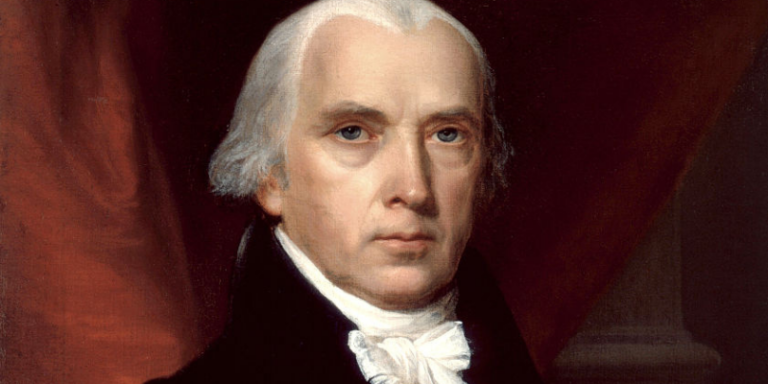James Madison: The Father of the Constitution
James Madison contributed to Virginia’s Statute of Religious Freedom, the US Constitution, and the Bill of Rights.
By: Kelli Ballard | May 12, 2025 | 575 Words

Portrait of James Madison by an unknown artist. (Photo by GraphicaArtis/Getty Images)
James Madison was the fourth president of the United States. He helped secure our religious liberty and freedom of speech. Because of all the work he did helping to build our nation and his efforts with writing the new country’s laws, he is known as the “Father of the Constitution.”
Early Years
Born on March 16, 1751 in Port Conway, VA, Madison spent his younger years becoming educated. In 1762, he was sent to a boarding school in King and County, VA and returned to his father’s estate – Montpelier – five years later, where he was privately tutored. In 1769, he attended the College of New Jersey, now known as Princeton University, and studied Latin, Greek, science, and philosophy, graduating two years later in 1771.
In 1776, while serving as Orange County’s representative for the Virginia Convention, he met Thomas Jefferson, who would become his lifelong friend. In 1780, Madison went to Philadelphia to serve on the Continental Congress. The future president was adamant about separating church and state and he helped get Virginia’s Statute of Religious Freedom (revised version from Thomas Jefferson) passed in 1786. The next year saw him tackling the challenge of the US Constitution.

Although Madison was a federalist, he advocated for a strong central government. He suggested forming a three-part federal government that consisted of the executive, legislative, and judicial branches to keep a balance and prevent abuse of power by any one branch. Some of the colonies were not in favor of his ideas, so Madison joined Alexander Hamilton and John Jay to work on getting the Constitution ratified. The men wrote letters that were published in New York newspapers known as The Federalist papers.
The US House of Representatives was a legislative body that Madison helped create, and in 1789, he won a seat on it. As a representative, he worked on the Bill of Rights, and was responsible for ensuring Americans had freedom of speech, were protected against “unreasonable searches and seizures,” and that they received “a speedy and public trial.”
President James Madison
After serving as President Thomas Jefferson’s secretary of state, Madison was elected president in 1808. One of the new president’s biggest challenges was the unrest between the United States and Great Britain. American ships and crews were being seized and the vastly unpopular Embargo Act did not help the problem. During his second term, Madison declared war on Britain, known as the War of 1812.
In 1814, British forces invaded Maryland and made their way to Washington where they burned many official buildings including the White House and the Capitol, forcing Madison and his government to flee the area. However, the next month, under the direction of Andrew Jackson and his soldiers, US troops were able to stop another invasion. The victory of the Battle of New Orleans in 1815 led to the signing of the Treaty of Ghent, ending the war.
Madison died on June 28, 1836 at his Montpelier estate. Just two years before, he had written a message titled “Advice to my Country” and had specifically requested that it not be published until after he was gone. In the note he said: “The advice nearest to my heart and deepest in my convictions is that the Union of the States be cherished and perpetuated. Let the open enemy to it be regarded as a Pandora with her box opened; and the disguised one, as the Serpent creeping with his deadly wiles into Paradise.”
















